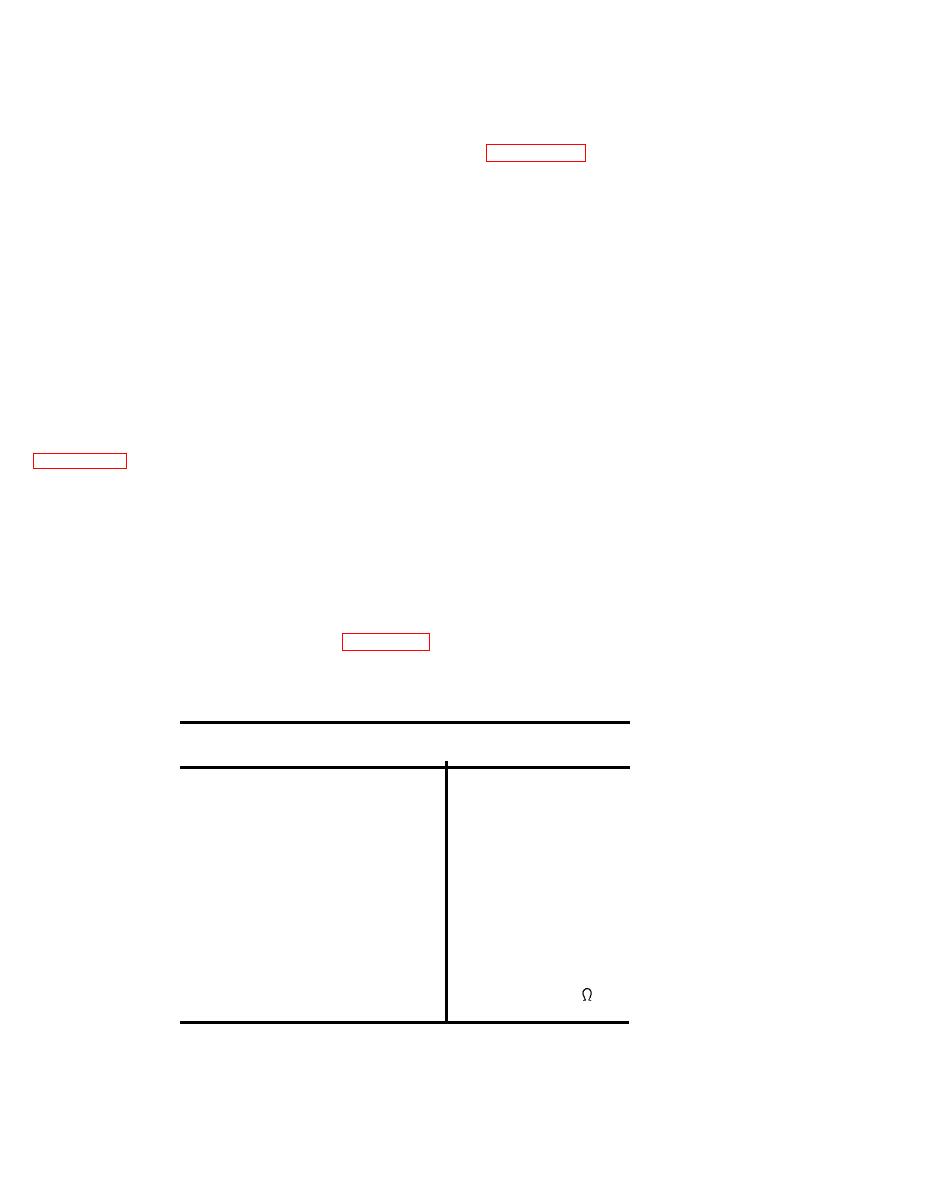
TM 11-6625-524-14-4
a . D i o d e C a r t r i d g e : D i o d e failure results from excessive Rr, AC or DC in-
p u t s . To test, remove the exposed setscrew on the side of the probe housing,
g e n t l y slide the cartridge out of the housing (see figure 5-2). Two (2) small
spring contacts will be seen on one (1) end of the cartridge, Care should be ex-
ercised, not to damage these contacts,. By placing the DC multimeter, set to ohms,
a c r o s s the contacts, a forward-reverse resistance ratio of approximately 800 times
should be noted with approximately 5K in the forward direction. Any other reading
w o u l d indicate a faulty cartridge. If faulty, replace.
T o replace the diode cartridge, first remove the grounding spring from the probe
housing. The spring may be reused only if clean and undamaged. During manufacture,
a thin protective film of white vaseline was applied to all silver-plated surfaces
t o retard oxidation, Care should be exercised to avoid removal of this film. If
t h e film has been inadvertently removed or if the contacts inside the probe hous-
ing have been cleaned, a thin film of white vaseline may be applied to the surface.
T h e cartridge should be carefully inserted into the housing, making certain the
s l o t in the side of the cartridge is aligned with the locking screw hole in the
side of the probe housing. The locking screw may now be inserted and tightened,
t a k i n g care that it properly engages the cartridge slot.
F i n a l l y , the grounding spring is inserted (note the correct position as shown in
r i d g e all the way into the housing several times. W h e n the spring is in its correct
p o s i t i o n , the fingers will be flush with the edge of the probe housing. With a
l i t t l e thumb pressure, the cartridge should slide smoothly back and forth against
the spring-loaded socket assembly inside the probe housing. If it binds and does
n o t fully return after being depressed, the grounding spring fingers may be curved
excessively outward. The spring should be removed and the fingers flattened very
slightly by pinching them between the smooth area of a pair of long-nosed pliers.
b.
With the DC multimeter set to ohms, perform the following resistance checks and
compare to the values as shown in Table 5-1.
Location
Resistance
I
10K 5%
Plug Pin A to Pin B
l00K 5%
Plug Pin A to Pin C
500K 5%
Plug Pin A to Pin D
Plug Pin J to Blue Dot
10K 5%
T e r m i n a l in Probe Housing
Plug Pin H to Non-Blue Dot
10K 5%
Terminal in Probe Housing
Infinity
Plug Pin J to Pin H
Plug Pins A, J and H to
Infinity
Probe Housing Shell
Plug Pins E, F and K to
Probe Housing Shell
Less than 1
Any discrepancies in the above probe resistance measurements indicates a faulty
probe. The probe should be replaced.
6 U.S.
GOVERNMENT
PRINTING
OFFICE
1984-707-002

